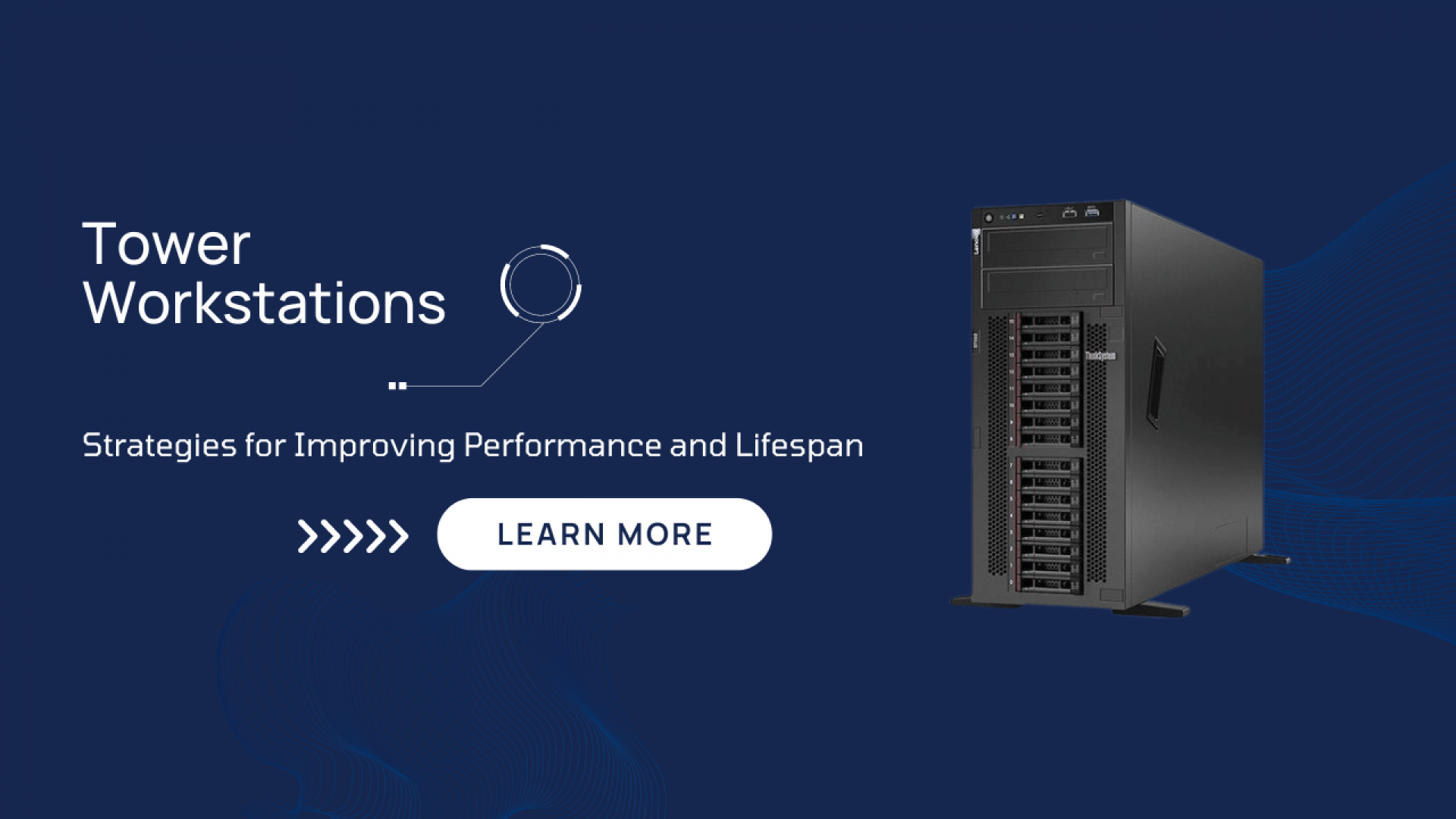
Introduction:
Tower workstations are powerful computing devices that serve as the backbone of many businesses' operations. However, as technology advances and workloads evolve, it becomes essential to upgrade these workstations to maintain optimal performance and prolong their lifespan. In this article, we'll explore various strategies for upgrading tower workstations, from hardware enhancements to software optimizations, to help businesses maximize their investment and stay ahead in today's competitive landscape.
Assessing Performance Needs:
Before initiating any upgrades, it's imperative to assess your tower workstation's existing performance and pinpoint areas for enhancement. Evaluate critical factors like processing power, memory capacity, storage needs, and graphics capabilities in alignment with your workload requirements and anticipated growth. By conducting a comprehensive assessment, you can determine the most suitable upgrades to optimize performance and address potential bottlenecks effectively. This strategic approach ensures that upgrades align with your specific needs, enabling you to maximize the efficiency and longevity of your tower workstation while accommodating future expansion and evolving work demands.
Upgrading CPU and GPU:
Enhancing workstation performance is best achieved by upgrading the central processing unit (CPU) and graphics processing unit (GPU). Investing in newer, more potent processors and graphics cards enables smoother handling of demanding tasks like 3D rendering, video editing, and simulation workloads. Upgrading to advanced CPU and GPU models enhances computational capabilities, accelerates graphics processing, and boosts overall system performance. Whether for professional use or gaming, powerful processors and graphics cards ensure seamless operation and efficient task execution. Therefore, prioritizing upgrades to CPU and GPU components is essential for individuals and businesses aiming to maximize workstation performance and productivity.
Adding More RAM:
Expanding the random access memory (RAM) in your tower workstation can notably enhance performance, particularly during multitasking or handling large datasets. Upgrading to higher-capacity RAM modules or installing additional RAM sticks can cater to increasing memory demands. By increasing RAM capacity, users can experience smoother multitasking, quicker data processing, and improved overall system responsiveness. Whether for professional tasks or gaming, having ample RAM ensures seamless operation, minimizes lag, and optimizes productivity. Therefore, investing in RAM upgrades is a prudent decision for individuals and businesses seeking enhanced performance and efficiency from their tower workstations.
Upgrading Storage Solutions:
Enhancing storage solutions can significantly boost performance and reliability. Transitioning from traditional hard disk drives (HDDs) to solid-state drives (SSDs) offers quicker data access speeds and enhanced system responsiveness. Moreover, integrating RAID configurations can augment data redundancy and fortify protection against drive failures. By embracing these upgrades, businesses and individuals can experience smoother operations, faster data retrieval, and heightened data security. The combination of SSDs and RAID configurations not only improves overall system performance but also ensures data integrity and resilience, safeguarding critical information against potential loss or corruption. Therefore, it's advisable to consider these advancements to optimize storage capabilities and elevate system performance.
Optimizing Cooling Systems:
Maintaining stable operating temperatures and preventing thermal throttling are crucial in tower workstations. Upgrading cooling systems with high-performance fans, advanced heat sinks, and efficient liquid cooling solutions is essential to dissipate heat more effectively. These enhancements ensure consistent performance, even under heavy workloads and prolonged usage. By optimizing cooling mechanisms, tower workstations can operate at peak efficiency, minimizing the risk of overheating-related issues and hardware degradation. Investing in superior cooling solutions not only enhances the workstation's reliability but also prolongs its lifespan, reducing maintenance costs and improving overall user experience. Therefore, businesses and individuals should prioritize upgrading their cooling systems to maximize the performance and longevity of their tower workstations.
Updating Firmware and Drivers:
Regularly updating firmware and device drivers is essential for ensuring compatibility, stability, and security in tower workstations. Check for updates from hardware manufacturers and install the latest firmware patches and driver updates to optimize system performance and address potential security vulnerabilities.
Implementing Hardware Acceleration:
Hardware acceleration technologies such as GPU acceleration and dedicated hardware accelerators can offload compute-intensive tasks from the CPU and improve overall system performance. Evaluate software applications that support hardware acceleration and consider investing in compatible hardware for enhanced efficiency.
Performing System Maintenance:
Regular system maintenance tasks such as cleaning internal components, removing dust buildup, and replacing worn-out components can help prolong the lifespan of tower workstations. Schedule routine maintenance checks to ensure proper airflow, prevent overheating, and identify potential hardware issues early on.
Utilizing Performance Monitoring Tools:
Deploy performance monitoring tools to track system metrics such as CPU usage, memory utilization, and temperature levels in real-time. Monitor system performance over time to identify performance bottlenecks, optimize resource allocation, and proactively address potential issues before they impact productivity.
Optimizing Software Configuration:
Optimizing software configuration is paramount for maximizing the efficiency of tower workstations and enhancing overall system performance. By disabling unnecessary background processes, fine-tuning operating system settings, and prioritizing critical applications, resource contention can be minimized, ensuring smooth operation. This proactive approach optimizes system resources, allowing the tower workstation to allocate processing power, memory, and storage more efficiently. Additionally, streamlining software configuration reduces system clutter, enhances responsiveness, and mitigates potential performance bottlenecks. By implementing these optimization techniques, users can experience improved productivity, reduced downtime, and enhanced user experience on their tower workstations, ultimately maximizing the return on investment in hardware upgrades and ensuring optimal performance for demanding tasks.
Conclusion:
Upgrading tower workstations is essential for maintaining peak performance, accommodating evolving workloads, and extending the lifespan of these critical computing devices. By following the strategies outlined in this article, businesses can enhance the performance, reliability, and efficiency of their tower workstations to meet the demands of today's dynamic business environment. Regular assessment, strategic upgrades, and proactive maintenance are key to ensuring that tower workstations remain powerful assets that drive productivity and innovation in the workplace.

Leave a Comment